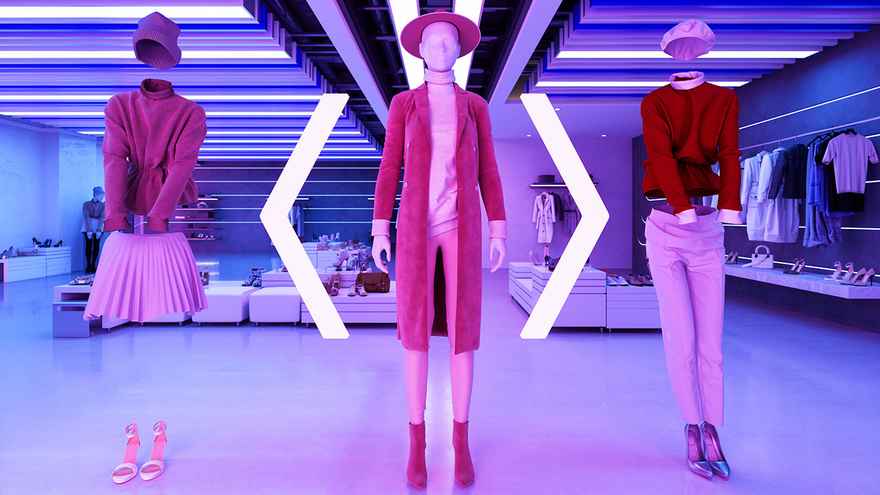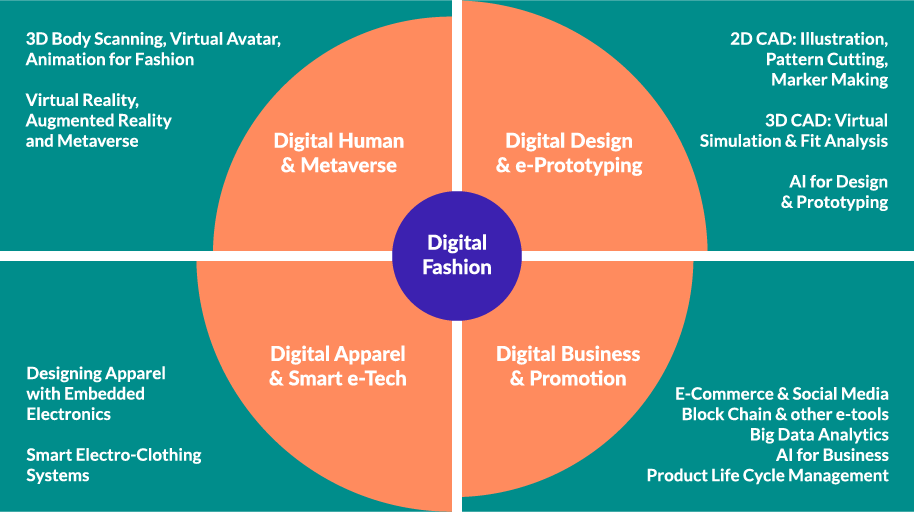Fashion and the Metaverse Illusion

Technology, technology, and more technology. Integration on top of integration, and augmented reality aplenty. The hype and bust, or the reality versus the utterly inflated – almost absurd – brand claims. The fear of missing the wave and being left behind.
These are the symptoms, and the realities, surrounding the fashion industry and its adoption of the intangibility of the metaverse interactions: another commercial transaction, similar to the non-fungible tokens which are ‘cool to own’ and even ‘cooler to display.’
Time to rewind the tape and start from the beginning.
To meet the needs of fashion consumers in a smart way, programs such as 3D body scanning, virtual avatars, virtual dressing room, virtual mirrors, virtual size, and fit interfaces have been introduced by fashion brands, bringing customers as close as possible to a real in-store purchase experience.
The irreversible trend of digital fashion is here to stay, as recently demonstrated by Burberry. The attraction of NFT collectibles appears to be pervasive for the brand since they launched two NFT collections – one in 2021 and the other in 2022, both in partnership with Mythical Games.
With the recent emergence of the metaverse, a new horizon of digital fashion has been opened, largely split in four main sections:
- Digital human and metaverse
- Digital design and e-prototyping
- Digital apparel and smart e-technology
- Digital business and promotion

Credit: Sayem, 2022. Digital fashion innovations for the real world and metaverse. International Journal of Fashion Design, Technology and Education, 15, 2, pp 139-141.
The work of Tupikovskaja-Omovie and Tyler (2021) revealed the potential application of eye-tracking devices in understanding the fashion consumer’s behaviour on smartphones, while Särmäkari and Vänskä (2021) described tomorrow’s fashion designers as cyborgs, proposing a concept of ‘cyborg designer 4.0’, which refers to a physical and digital craftsperson.
Back in 2016, before the metaverse or its real-life applications entered the mainstream conversations, Phylis Johnson PhD was arguing in her Virtual Fashion as an Industry: Making the World Look Better One Avatar at a Time that ‘the fashion industry seems to be the ideal match for environments built on the creativity of its designers and consumers’.
But how much is fluff, and how much is true customer experience and the brand delivering on its promise? How much is anything metaverse-related about behavioural change or improving the life or livelihood of someone, and how much is it about simply getting media coverage?
According to Dr Lee of SeoKyeong University’s Department of Software, and as argued in his ‘Study on Metaverse Hype for Sustainable Growth’ published in 2021 in the International Journal of Advanced Smart Convergence, ‘if we do not manage the hype for the metaverse, which has recently been receiving a surge in interest, the metaverse will fail to cross the chasm.’
Today’s fashion brands metaverse marketing is focused on virtual worlds and lifelogging, with presence and interoperability as its core characteristics. There is nothing wrong with creating added value through the development of digitally scarce products and implementing a strategy to promote the brand identity by combining a storytelling content that is reflective of the brand philosophy and the contents of metaverse.
What is wrong though, and customer deceiving, is to put forward unsubstantiated claims related to sustainability, digital limited editions and similar. A digital fashion item in the metaverse can only be ‘limited’ if it is as unique as a bitcoin, with perfect traceability behind it. Without the uniqueness of the blockchain, no fashion brand can claim the customer metaverse experience and purchases are ‘one-off.’ The experience may be, but the purchase is not. It’s like watching a 3D movie with the 3D glasses on, and pretending one owns the only copy ever released of Avatar the movie.
According to a March 2022 survey by Wunderman Thompson Intelligence conducted in the UK, US and China, consumers are expecting the metaverse to disrupt all industries with entertainment (90%), advertising (89%) and retail (86%) leading in terms of reach.
For some, metaverse is a pipe dream largely fuelled by the fear-of-missing-out (FOMO). According to an article published by Nasdaq (Lyu, 2022), ‘there is no guarantee the Metaverse will become popular, and it might not even exist in reality for years, if not decades, to come’. Similar to other companies and brands issuing their NFTs and Metaverse push, the functionality of many Metaverse and NFT "investments" relies, primarily, on future promises.
There is a clear first-mover advantage that pushes many brands (fashion and otherwise) to jump into the Metaverse and take consumers along with them, to a place where no consumer can ever own anything since there is no physical materiality to the purchase they make. To coax consumers to believe in their ownership of a digital item in utopia land is highly unethical since, according to Lyu (2022):
‘Accessing the Metaverse will always be free — even if some projects might gate access to their land plots or events — and until it has come to life, watching on from the side-lines may be the smart financial decision.’
But it may be the opportunity of a lifetime if you dare to look behind the scenes an assess the actual technology being developed. Who knows?